Misc
SI today: 6:00 - 7:30, Fraser 104.
Questions?
The Fundamental Theorem of Calculus, Part 2
“Fundamental Theorem of Calculus Part 2: The Evaluation Theorem” in section 5.3
Key Idea(s)
In words: if F is an antiderivative of f, then the integral of f from a to b is F(b) - F(a)
Or, in mathematical symbols:
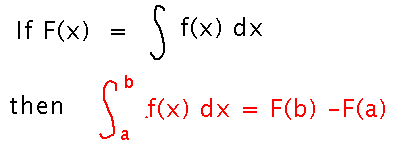
Example
Based on Example 5.20.
Evaluate the integral from -1 to 1 of t3 + 1.
Start by finding an antiderivative of t3 + 1, then plug the bounds of integration into that antiderivative:
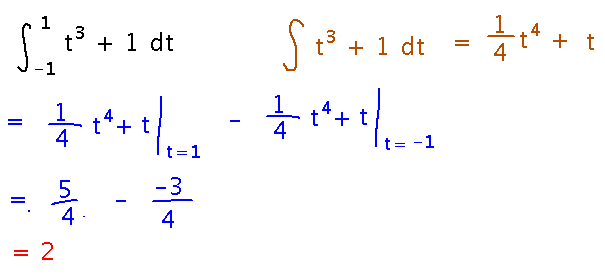
Using Other Antiderivatives
Evaluate the integral from 1 to e of 1/x.
As before, find an antiderivative and plug in the bounds:
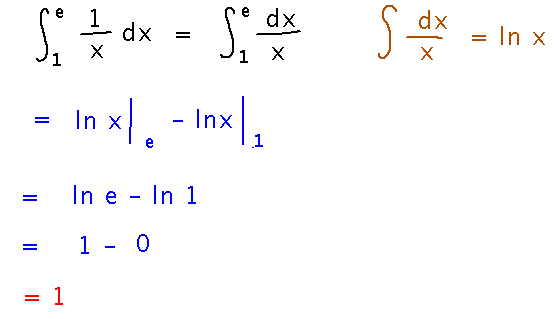
Side note: if you want to use Mathematica to find an antiderivative, you can do it with Integrate, specifying just the variable, not the variable and bounds, as the second argument. For example,...

How about the integral from 0 to π/2 of 3(sin x + cos x)?
Use the same process as before, combined with some integration rules to make things simpler (e.g., removing the constant multiple from the integral), and remembering how sine and cosine behave.
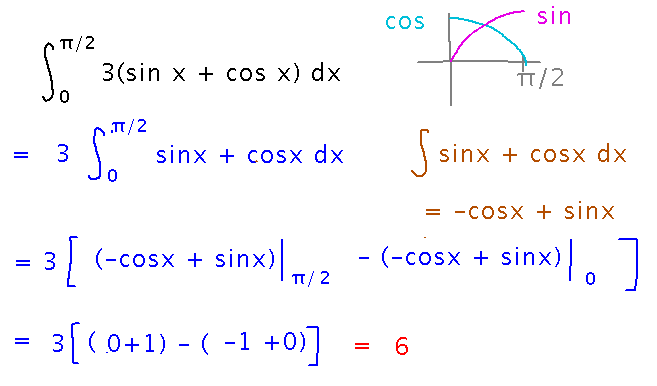
Applications
The Mathematical Gardeners Club of Geneseo has laid out a flower bed bordered by the x axis and the curves y = (x+1)2 and y = (x-1)2. What is the area of the flower bed (distances measured in yards).
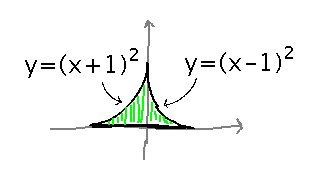
The area in question is the sum of 2 integrals, one for the left side and one for the right. Initially call the left and right bounds a and b, then figure them out later.
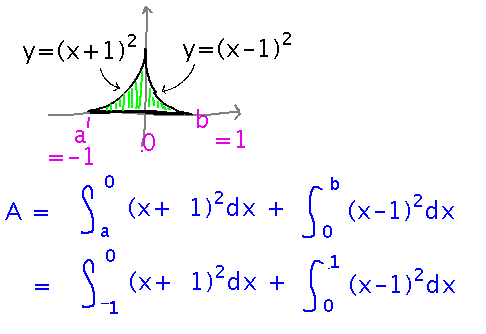
Now multiply out the (x+1)2 and (x-1)2 and integrate as before. We’ll do this quickly at the start of class Wednesday.
Problem Set
On many aspects of integrals.
See handout for details.
Next
We can only evaluate integrals of a few functions we know antiderivatives of. For example, we couldn’t directly integrate (x+1)2 and (x-1)2 from the garden example, even though it seems those ought to be easy adaptations of the power rule. We need some more powerful methods....
Integration by substitution.
Read the first part of section 5.5 (up to, but not including, “Substitution for Definite Integrals”).